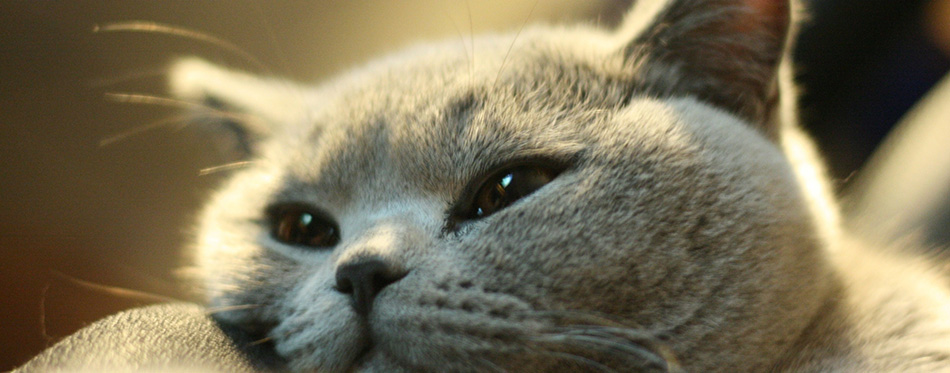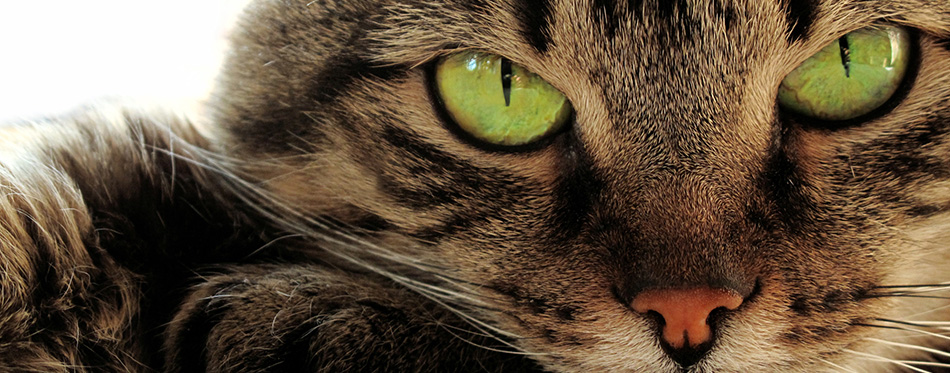Being members of a family of top-notch predators, domestic cats have exceptional eyesight. They use this sense to zero in on their prey where no ordinary human vision can. This remarkable sense of sight is also active at night and in low-light conditions. It is a trait that feline predators in the wild possess so they can also hunt when the sun has already set. The night vision capabilities of cats are a hundredfold more acute than that of humans. If you want to learn how your beloved feline friend can see in the dark, then read on.
Understanding the Process of “Seeing”
When an organism “sees” something, the reality is that it is not the organism’s eyes that “see”. The brain is the principal organ that provides meaning to the different electrical impulses it receives from the eyes. Whether they are from a cat or a human, the eyes are mere instruments that facilitate the gathering of “visual” information. This piece of information gets transmitted to the occipital lobe of the cat’s brain via the optic nerve. The occipital lobe processes these bits of visual information while also getting other inputs from other parts of the brain. Once the processing is complete, the cat is able to formulate a “meaning” to what it “sees”.
The eyes receive light waves from the environment. These light waves enter the front of the eyes and move towards the back. Along the way light passes through different structures like the cornea, pupil, lens, and retina, among others. Each of these structures has very specific functions that aid in the gathering of light or visual information.
The cornea is the outer layer of the eye which serves as a protective film for the other structures in the interior of the eyes. The pupil serves like a window that changes the size of its opening to regulate the amount of light entering. If it is too dark – meaning there is fewer light waves entering the eyes – the pupil will have to increase its size to allow more light to enter. If it is too bright outside, the pupil will try to make the size of the opening a lot smaller. This is to help lessen the amount of light that enters.
As light passes through the pupils, it hits the lens. We know what a lens does. It bounces off light towards a target organ at the back of the eyes. The lens will also try to regulate the amount of light that gets refracted to the retina. It can either make its shape more concave or more convex in an attempt to convey the right amount of light to the back of the eyes.
The retina is where the light waves that enter the eyes terminate. This is also that part of the cat’s eye that is responsible for their remarkable vision. The retina contains two types of photoreceptors or light receptors. These are the cones and rods. Cones are responsible for color vision. They also facilitate daytime vision. When it comes to seeing in the dark or low-light conditions, this is the responsibility of rods. These are photoreceptors that are sensitive to different shades of gray and different levels of brightness. Rods are also the photoreceptors responsible for peripheral vision.
Photoreceptors – both rods and cones – convert light into nerve impulses. The receptors send these electrical signals to the thalamus via the optic nerve. From here, the nerve impulses travel all the way to the occipital lobe. It is here where the nerve impulses get processed into visual information. Nerves in the occipital lobe convey the “processed” image to the parietal lobe where the image gets “interpreted”.

Differences in Feline and Human Vision in Relation to Night Vision Capabilities
Based on the foregoing discussion, it is clear that the principal structure that allows any organism to see in the dark is the rods. These photoreceptors are very sensitive to brightness levels, shades of gray, peripheral vision, and night vision capabilities. But then, almost all organisms have rods in their retinas. And that includes cats, dogs, and humans. Does this mean the ability of cats to see in the dark is similar to how we see in low-light conditions? Unfortunately, it is not the case. You see, there are several anatomical differences between the eyes of a human and the eyes of a cat. Here are the key differences:
- More Rods Relative to Cones
As mentioned, rods are very important when it comes to gathering low-light information. In theory, the more rods that an organism has, the better it is in seeing things in the dark. This is the case with the retina of cats. This structure in their eyes contains more rods relative to cones. That is also why cats are not good at distinguishing colors since cones are responsible for color vision.
Since feline retinas contain more rods, they do not need plenty of light to generate a nerve impulse they can send to the brain. Instead, they only need about one-sixth of the amount of light that the human eyes need to see in a similar situation. For example, if you need at least 1 lumen of light to see your way, cats will only need about 1/6 lumen to see what you see.
Since the process of visual sensing relies on the entry of light in the eyes, it is impossible to see in total or complete darkness. When we say “total darkness” we mean there is a total absence of light. No matter how many rods the cat’s eyes contain, it will still not be able to see anything. This is because there is no light to “gather”.
- Wider Field of Vision
In our discussion about the process of “seeing”, we mentioned that one of the integral functions of rods is in peripheral vision. The reason for this is straightforward. Rods are always located on the outer edges or peripheries of the retina. This gives them a wider field of vision compared to humans.
The maximum field of vision of humans is only 180 degrees. Cats, on the other hand, have a field of vision that spans 300 degrees. Each of the cat’s eyes can provide a sweeping visual field of 155 to 208 degrees. When it comes to the cat’s night vision capabilities, a wider field of vision allows it to scan their surroundings in a more efficient manner. It allows cats to see both prey and predators in the dark.
- Presence of Tapetum Lucidum
There is one very important structure in a cat’s eye that is not present in humans. Behind the retina is the Tapetum Lucidum. This is a very thin layer of tissue that serves as a retroreflector. What it does is that it reflects light back to the retina where the photoreceptors are found. This structure is very common among nocturnal animals as well as creatures of the deep sea.
As the lens transmit light into the retina, there is a chance that some of this light may go beyond the retina. Since the Tapetum Lucidum is behind the retina, it bounces off stray light back to the retina. This can improve the night vision capabilities of cats since there is now more light that can stimulate the photoreceptors.
It is easy to identify the Tapetum Lucidum in cats. In low-light conditions, the Tapetum Lucidum is what we call the eyeshine or the “cat’s eye”.
- Vertical Orientation of the Pupils
The pupils are important structures of the eyes. Pupils regulate the amount of light that enters the eye. It changes the size of its opening relative to the level of ambient light.
In humans, the pupils have a rounded shape. In cats, the pupils are more elliptical. They are also oriented in a more vertical fashion. This allows the pupil to open a lot wider than that of humans. The wider the pupillary opening, the more light that can enter the eye.
From a constricted (small opening) state, human pupils can only widen up to 15 times. By comparison, a cat’s pupil can widen anywhere between 130 and 300 times its constricted size. Such a wide opening allows more light to enter. Regardless of how faint the light source can be, a cat’s wide-open pupil can still collect enough light to transmit to the retina.
You may also like our articles on Laser Pointers for Cats and Cat Toys.

How Cats Can See in the Dark
There are four principal features in the cat’s eye that allow it to see in the dark a lot better than human night vision.
Pupils that open wider than that of humans allow more light to enter the eyes, regardless of how faint the light is. As light hits the retina, the increased number of rods facilitates the generation of nerve impulses for transmission to the brain. Since there are more rods, they also provide a wider field of vision. This is important in improving night vision capabilities. To make sure that no light will ever escape the retina, the Tapetum Lucidum will reflect back whatever light escapes.
And that is how cats can see in the dark.
Source:
- Can Cats See in the Dark? – Tex Vet Pets

